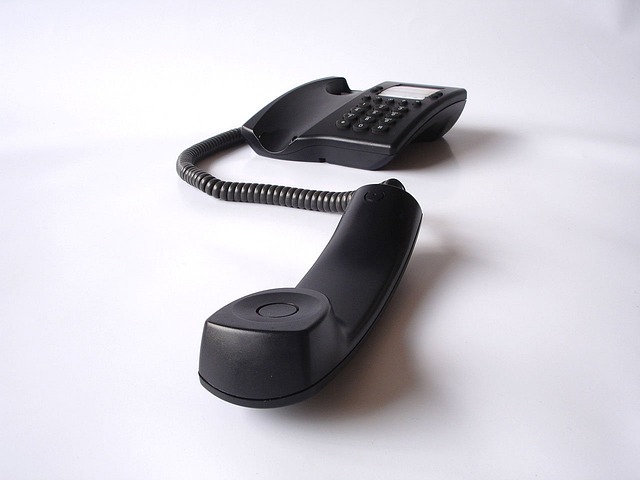Understanding the Basics of Budgeting
Creating a budget that effectively supports your long-term financial goals is essential for achieving financial freedom. Budgeting sounds simple, right? But, it actually involves a detailed sequence of planning, tracking, and updating your financial life. To kick off this journey, you need to understand the basics of budgeting. At its core, budgeting is about tracking your income and expenses so that you know exactly where your money is going each month. This awareness is the first step in making informed financial decisions.
What makes a budget truly effective? It’s the clarity of your goals. Establishing both short-term and long-term goals sets the tone for your budget. Short-term goals might include saving for a vacation or paying off credit card debt, while long-term goals should focus on larger aspirations, such as buying a home or preparing for retirement. By identifying these goals, you develop a roadmap that your budget needs to support. This structured approach helps ensure that every dollar you spend aligns with your financial aspirations.
Moreover, breaking down your expenses into fixed and variable categories provides even more clarity. Fixed expenses, like rent and utilities, remain constant each month. On the other hand, variable expenses, which can fluctuate, include groceries, entertainment, or dining out. Recognizing the difference between these categories allows you to identify areas where you can cut back when necessary. Therefore, understanding the fundamentals of budgeting helps you maintain better control over your finances and aligns your spending with your long-term financial objectives.
Setting Clear Financial Goals
Now that you’ve grasped the basics, let’s dive into the importance of setting clear financial goals. Goals serve as a motivating force and provide direction to your budgeting efforts. When you know what you’re aiming for, you can allocate your resources accordingly. So, how do you set effective goals? Start with the SMART criteria—Specific, Measurable, Achievable, Relevant, and Time-bound. For example, instead of saying, “I want to save money,” you could say, “I want to save $10,000 for a down payment on a house within the next three years.” This goal is specific, measurable, and has a clear timeline, making it easier to track your progress.
In addition, make sure your goals resonate with your values. If traveling is significant to you, craft your budget to ensure funds for that journey. Values-driven budgeting helps you remain committed to your financial plans. As you create your budget, align your spending with these values, and regularly revisit your goals. This dynamic approach keeps you engaged and allows for adjustments based on life changes. Regular reviews of your goals will give you fresh perspectives and motivations to stick to your budget over time.
Lastly, don’t forget to celebrate your milestones along the way. Whenever you reach a financial goal, no matter how small, take the time to recognize and reward yourself. Celebrating these victories will reinforce positive behaviors and motivate you to keep pursuing your other financial aspirations. Building a budget that supports your financial goals is not just about numbers; it’s about creating a fulfilling financial journey that intersects with your life’s ambitions.
Creating a Structured Budget
Once you have your financial goals in place, the next step is crafting a structured budget. The structure can take many forms—envelope systems, digital tools like budgeting apps, or even a simple spreadsheet. Choose the method that feels most comfortable and practical for you. For those who enjoy technology, several apps can help you track every dollar spent and visualize where your money goes. Tools like Mint, YNAB (You Need A Budget), or EveryDollar can transform your financial management into a more engaging and insightful experience.
Start by listing all sources of income, including salaries, side hustles, and investment returns. Then, compile your monthly expenses. This exercise not only sheds light on your spending habits but also gives you a clearer picture of your financial landscape. Once you’ve categorized your income and expenses, calculate the difference between the two. If you find yourself in the positive, that’s fantastic; it means you’re living within your means. Use that surplus to bolster your savings or debt repayment efforts.
If your expenses outstrip your income, it’s time to review and trim the fat from your budget. Carefully analyze each category of expense. Identify necessities versus discretionary spending. For instance, dining out and entertainment are necessary for enjoyment but can often balloon without oversight. Setting limits on how much you spend in these categories can create a significant impact on your overall financial health. Furthermore, consider implementing the 50/30/20 rule as a guideline, where 50% of your income goes to needs, 30% to wants, and 20% to savings and debts.
Monitoring and Adjusting Your Budget Regularly
Creating a budget isn’t a one-time task; it requires regular monitoring and adjustment. Life changes constantly, and your budget should adapt accordingly. Begin by setting aside time each month to review your financial status. During this assessment, compare your actual spending against your budgeted amounts. Are you overspending in any category? Have your goals evolved or changed? Regular check-ins help identify any discrepancies and provide an opportunity to recalibrate.
For instance, if you’re consistently surpassing your budget on groceries, it might be time to evaluate why. Maybe you’re buying organic products or indulging in higher-end items. Adjust your grocery budget to reflect your lifestyle and needs, or find ways to save in other areas to balance things out. This proactive approach alleviates the potential for future financial strain and facilitates a smoother journey toward your financial goals.
Moreover, it’s essential to account for any unexpected costs. Emergencies can arise at any time—whether it’s a car repair or a medical expense. Maintaining a buffer fund within your budget for these unpredictable events alleviates the financial burden they can cause. This buffer ensures that you can manage these surprises without derailing your entire financial plan. In essence, flexibility in your budget fosters resilience, empowering you to respond to life’s challenges while keeping your long-term goals in sight.
Building an Emergency Fund
Central to supporting your long-term financial goals is the establishment of an emergency fund. This fund acts as your safety net during unexpected situations, lessening the financial strain and helping you avoid debt. A standard recommendation is to save three to six months’ worth of living expenses. This range gives you ample coverage should you lose your primary source of income or encounter an unexpected expense.
Creating an emergency fund may seem daunting, but it can begin with even small, consistent contributions. Treat it like any other bill in your budget. Automate transfers to your savings account specifically designated for emergencies. This approach ensures that saving becomes a habitual part of your financial rhythm. Gradually, these small contributions accumulate, building a financial cushion you can tap into when the unexpected strikes.
Moreover, remember that your emergency fund isn’t just about having a safety net; it also empowers you to take calculated risks. With an emergency fund in place, you can pursue opportunities like changing careers, starting a business, or making other significant life changes. Instead of fearing financial repercussions, you can step forward with confidence, knowing that you have a supportive safety net ready to catch you if needed. Ultimately, a well-established emergency fund intertwines with your budget to bolster your journey toward financial freedom and stability.
Investing for Long-Term Growth
Once you’ve mastered the art of budgeting, understanding how to invest is a logical next step. Investing is a powerful tool for building wealth over time, aligning perfectly with long-term financial goals. Your budget should allocate funds toward investment vehicles, such as stocks, bonds, or mutual funds, based on your risk tolerance and investment horizon. This proactive approach can yield returns that well outpace traditional savings accounts.
Before jumping in, educate yourself on investment options. Various resources, like online courses, books, and financial advisors, can provide valuable guidance. The stock market can feel intimidating, but remember that it’s one of the best ways to grow wealth historically. When investing, consider dollar-cost averaging, which involves consistently investing a fixed amount over time, reducing the impact of volatility in the market.
Moreover, think about retirement accounts such as 401(k)s or IRAs. These accounts offer tax advantages and greatly enhance your long-term financial strategy. Contributing to these accounts not only assists in building wealth over time but also often comes with employer matching, which is essentially free money. Maximize your contributions to benefit from this and supercharge your retirement savings.
Staying Motivated and Educated
On your journey toward establishing a budget that supports your long-term financial goals, motivation plays a significant role. Your financial literacy is key to sustaining interest in budgeting and investing. The more educated you become on financial matters, the more empowered you will feel in managing your finances. Regularly read books, listen to podcasts, or follow financial blogs. Engaging with content that focuses on financial planning will not only expand your knowledge but might also spark newfound interest in aspects of personal finance that you hadn’t previously considered.
Furthermore, surrounding yourself with like-minded individuals can enhance your motivation. Join local budgeting or investment groups, attend workshops, or participate in online forums. Sharing experiences with others can provide different perspectives and inspire new strategies to implement in your own budget. This sense of community creates an accountability system where you feel supported in your objectives.
Lastly, maintain a positive attitude toward your financial journey. Building a budget can sometimes feel overwhelming. When you experience setbacks, remember that it’s natural. The key is to learn from those experiences and adjust your plans accordingly. Each step, whether a success or a challenge, contributes to your overall growth and understanding of finance. Stay focused on your goals and celebrate each small victory, maintaining your financial momentum and fostering a sustainable approach toward your long-term financial aspirations.
Frequently Asked Questions (FAQ)
1. How can I create a budget if my income varies from month to month?
Consider using the “average” method. Take a look at your income over the past several months, calculate the average, and use that figure in your budget. Adjust your expenses accordingly to help balance out higher and lower income months. Prioritize essential expenses first, and save any surplus for your goals.
2. What tools or apps can help me manage my budget?
There are several helpful tools available. Popular budgeting apps like Mint, YNAB (You Need A Budget), and PocketGuard allow you to track expenses, set saving goals, and visualize your financial health easily. They offer user-friendly interfaces suitable for both beginners and experienced budgeters.
3. How can I stay motivated to stick to my budget?
To stay motivated, set clear, achievable goals. Break down larger goals into smaller milestones and celebrate accomplishments along the way. Regularly review your progress and adjust your budget as needed. Engaging with community support or accountability partners can also provide motivation.
4. How do I determine my long-term financial goals?
Begin by identifying what’s most important to you. Consider aspects like retirement, buying a home, or travel. Use the SMART criteria to outline specific, measurable goals that you can realistically achieve within a given timeframe. Regularly revisit and adjust your goals based on life changes and priorities.
5. Is it necessary to have an emergency fund if I have credit cards?
Yes, having an emergency fund provides security that credit cards cannot. While credit cards can be a safety net, they come with interest rates and repayment obligations. An emergency fund helps you manage unexpected expenses without incurring debt, allowing you to maintain financial stability.



